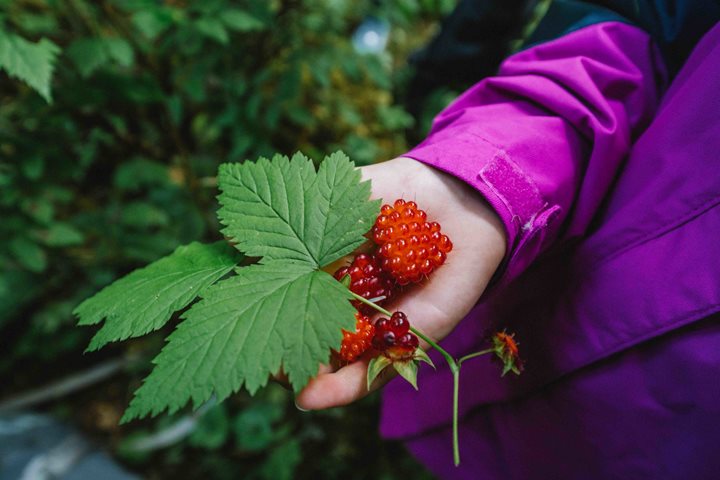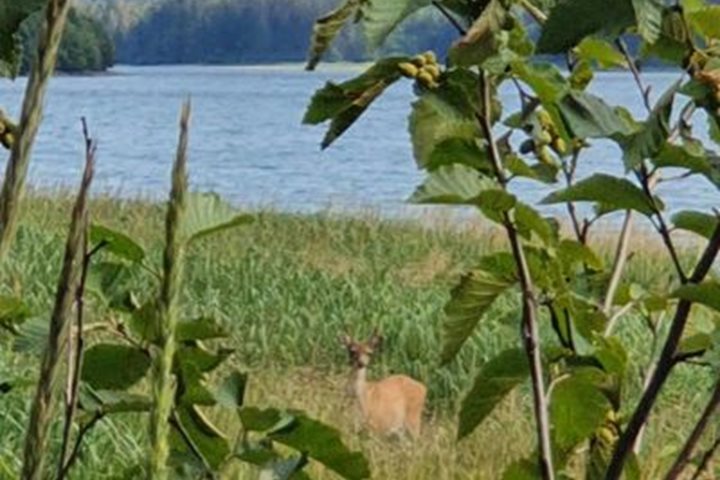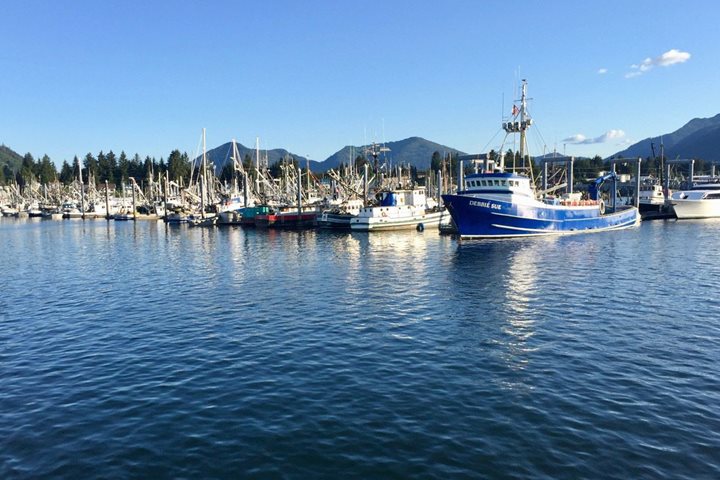Moving through an intact ecosystem brings a certain well feeling of rightness; a bone-deep sense of belonging and a joy in just being a part of life on our small and enchanting planet. And following a brown bear trail marked by fresh footprints and signs heightens all the senses. Our walks today through the deep forest and the intertidal brought us right into the heart of this coastal temperate rainforest wilderness.
We made a morning landing on Krestof Island, on the outer islands not too far north of Sitka but a long way from human habitation. De Graff Bay provided a beautiful protected kayak area, and the old growth forest and rocky beaches gave us lots of interesting bits to see and photograph and talk and to think about. Along the shore clams, mussels, limpets, barnacles, and kelp spread across the rocks and the tidal flat. A large coastal brown bear had cut through the tidelands within the past two hours. She had been occupied with finding food under the many rocks we found overturned, munching some goose tongue and digging up perhaps northern ground cone in the forest. (We found a two cubic meter area recently dug up—impressive!) Some of us enjoyed a taste of “sea asparagus”; salty of course but a nice flavor even at the end of the season.
The forest was a tangle of fallen moss-covered trees, patches of boot sucking mud, Sitka spruce and western hemlock of all ages, and mosses growing on mosses covered in lichens. Many decomposing giants were studded with artist conk—a hard fibrous shelf fungus that breaks down dead wood and helps to recycle nutrients. The white underside marks easily and artists sometimes use it as a canvas.
We cruised through the narrow scenic passages to Peril Strait in the afternoon, spotting eagles in the shoreside trees and several humpback whales in the channel.







